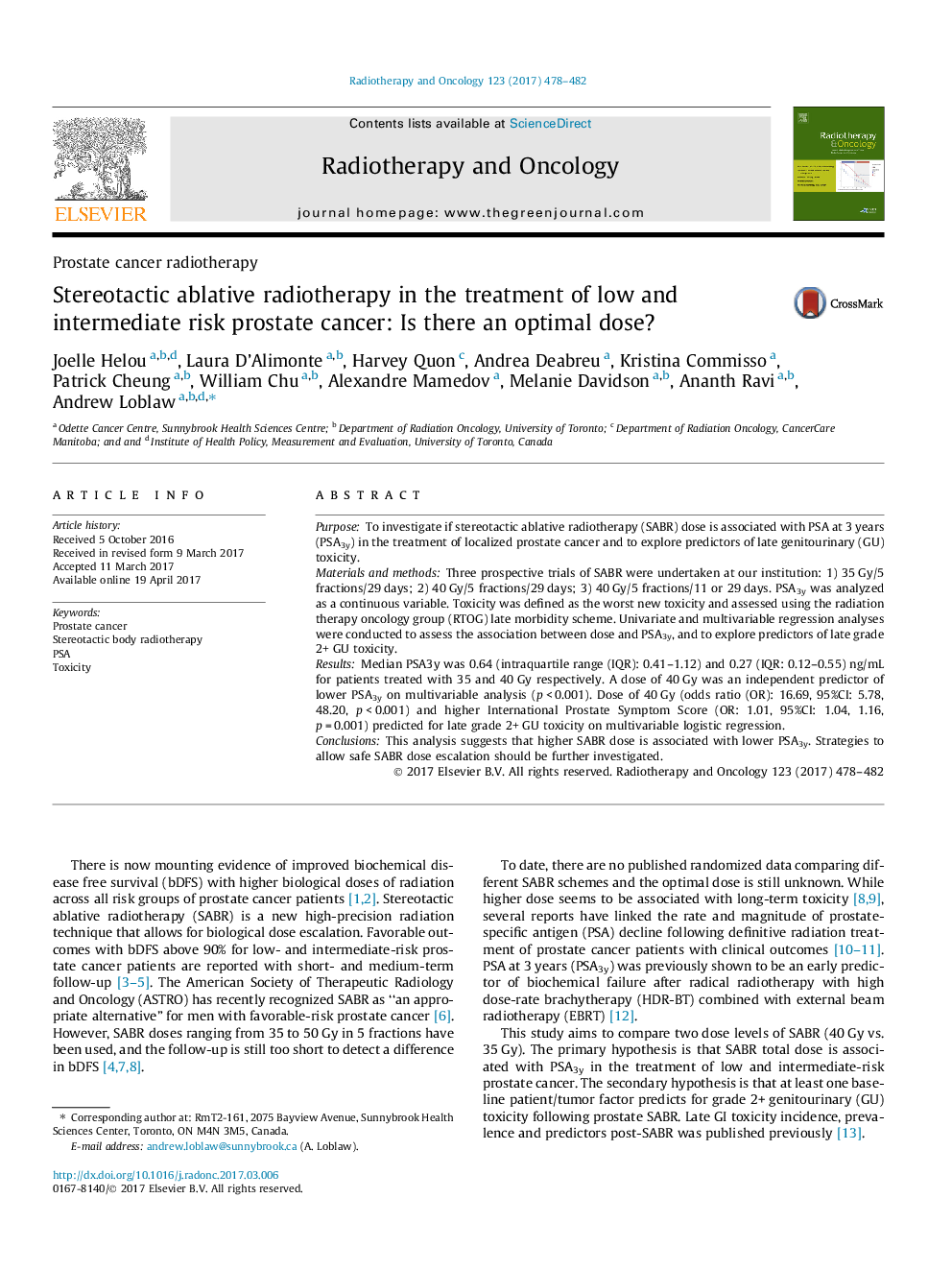| Article ID | Journal | Published Year | Pages | File Type |
|---|---|---|---|---|
| 5529839 | Radiotherapy and Oncology | 2017 | 5 Pages |
PurposeTo investigate if stereotactic ablative radiotherapy (SABR) dose is associated with PSA at 3 years (PSA3y) in the treatment of localized prostate cancer and to explore predictors of late genitourinary (GU) toxicity.Materials and methodsThree prospective trials of SABR were undertaken at our institution: 1) 35 Gy/5 fractions/29 days; 2) 40 Gy/5 fractions/29 days; 3) 40 Gy/5 fractions/11 or 29 days. PSA3y was analyzed as a continuous variable. Toxicity was defined as the worst new toxicity and assessed using the radiation therapy oncology group (RTOG) late morbidity scheme. Univariate and multivariable regression analyses were conducted to assess the association between dose and PSA3y, and to explore predictors of late grade 2+ GU toxicity.ResultsMedian PSA3y was 0.64 (intraquartile range (IQR): 0.41-1.12) and 0.27 (IQR: 0.12-0.55) ng/mL for patients treated with 35 and 40 Gy respectively. A dose of 40 Gy was an independent predictor of lower PSA3y on multivariable analysis (p < 0.001). Dose of 40 Gy (odds ratio (OR): 16.69, 95%CI: 5.78, 48.20, p < 0.001) and higher International Prostate Symptom Score (OR: 1.01, 95%CI: 1.04, 1.16, p = 0.001) predicted for late grade 2+ GU toxicity on multivariable logistic regression.ConclusionsThis analysis suggests that higher SABR dose is associated with lower PSA3y. Strategies to allow safe SABR dose escalation should be further investigated.
